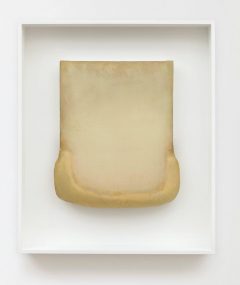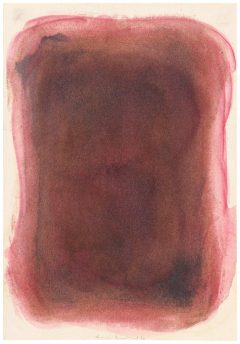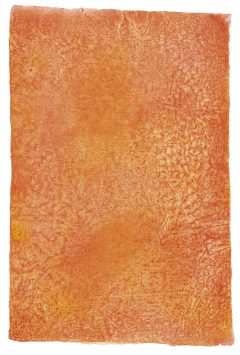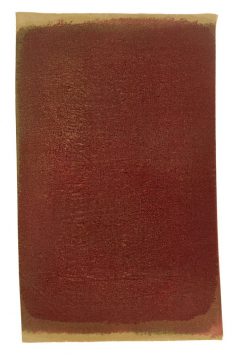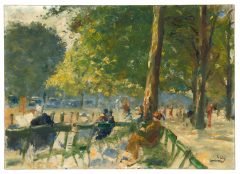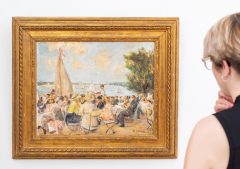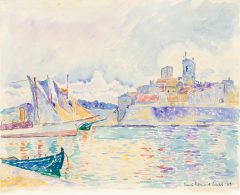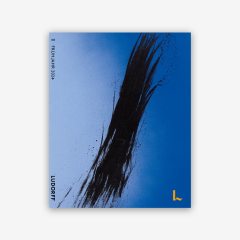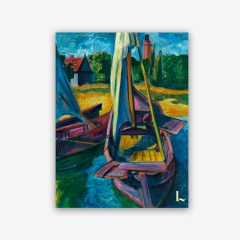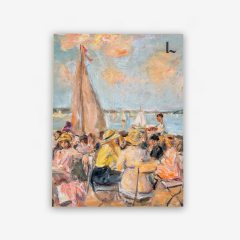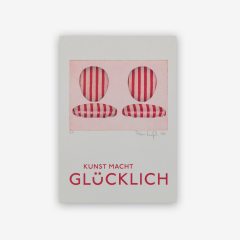Gotthard Graubner
Like almost no other German artist, Gotthard Graubner dealt with the values and effects of color on different pictorial media in his non-representational paintings. In contrast to many other painters, however, Graubner's works are not based on a systematically elaborated, color-theoretical concept, but rather on a tension structure that has been practically and painterly rehearsed over the course of his creative career, which operates according to the "experienceability of color through its differentiation" (Gotthard Graubner, in: Gotthard Graubner. Farbräume – Farbraumkörper – Arbeiten auf Papier, Ausst.-Kat. Kunsthalle Düsseldorf, Düsseldorf 1977, p. 34.) with opposing empirical values such as warm/cold, near/far, or open/closed. Graubner became known above all for his abstract monochrome, atmospheric cushion paintings - paintings on canvases decorated with synthetic cotton wool - which the painter himself calls "color space bodies". In their exposed three-dimensionality, these paintings not only underscore the spatial-plastic effect of the paint intended by Graubner, but also the contemplative aspect, which is above all characteristic of meditation: "Thanks to the organic condensation of color, space and body, [his] pictures enable a synthesis of self-absorption and self-presentation, of contemplation and certainty of existence.”(Uwe Wieczorek: Gotthard Graubner. Malerei als Prozess und Phänomen, in: Gotthard Graubner. Malerei, Ausst.-Kat. Kunstmuseum Liechtenstein, Vaduz, Dusseldorf 2010, p. 23.)
- Prices include German VAT. Exclusive of shipping costs for delivery to the European Union. All prices are subject to change and availability. Change region and currency
